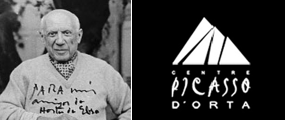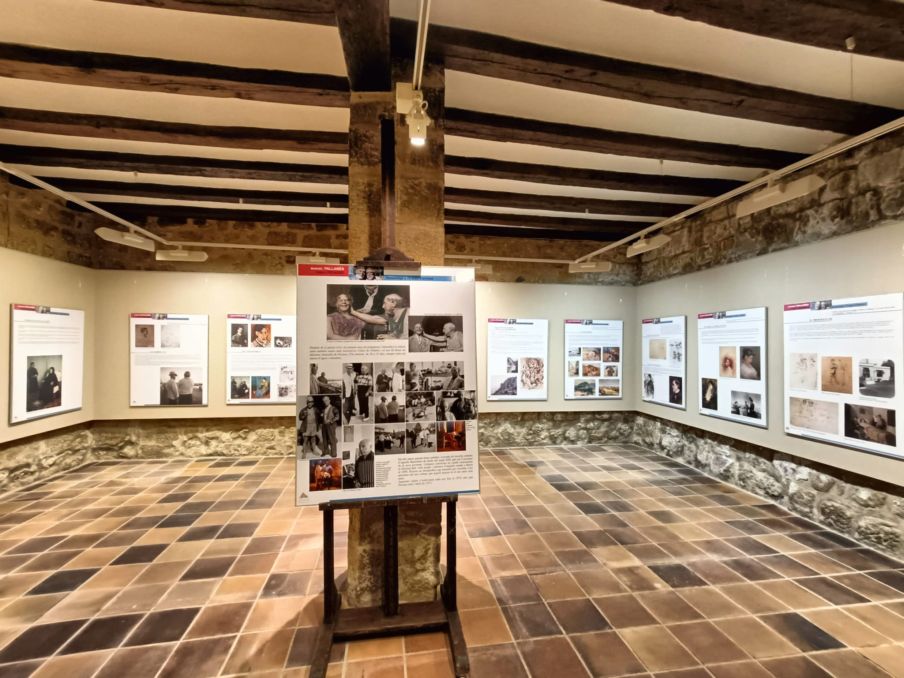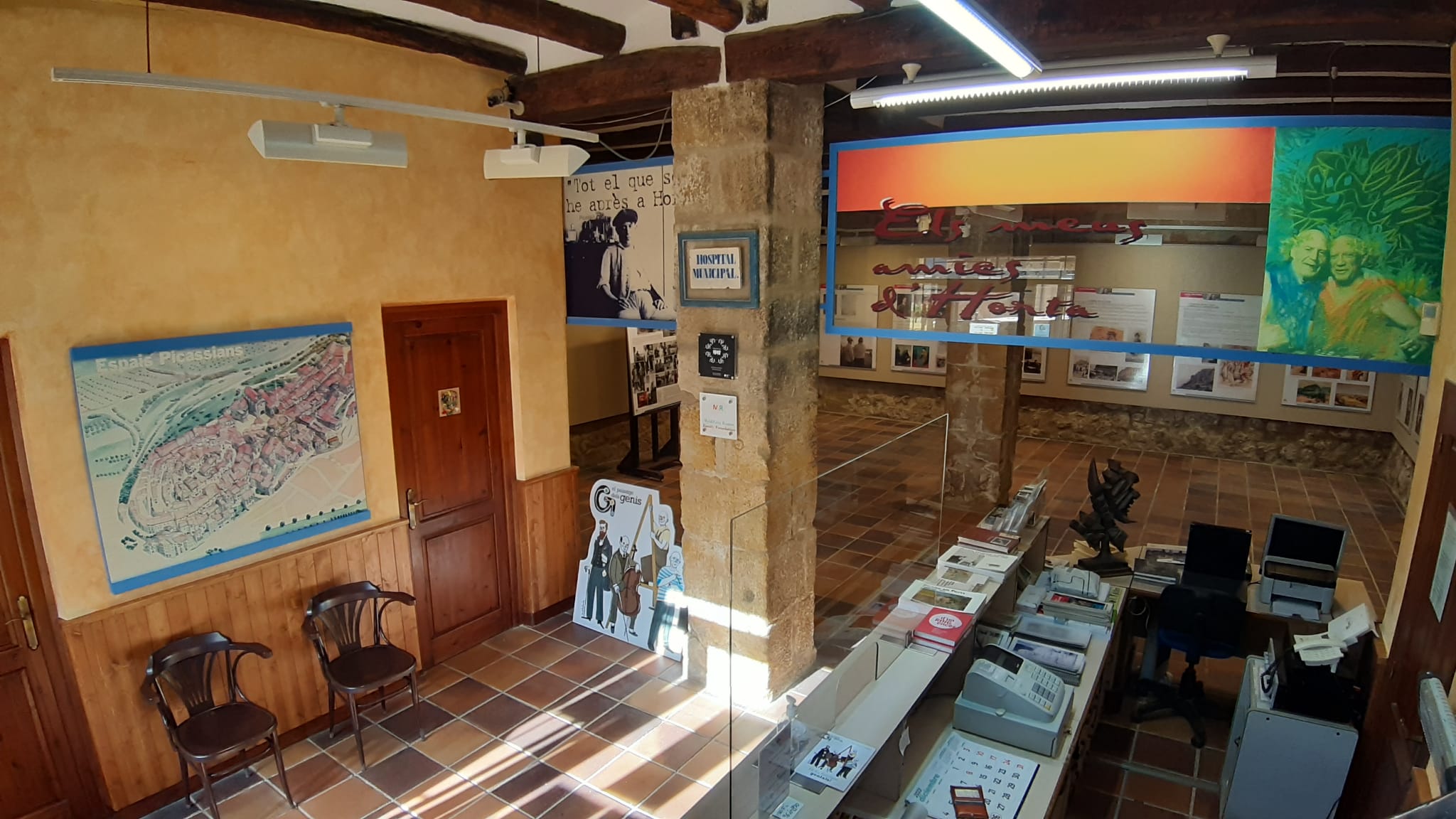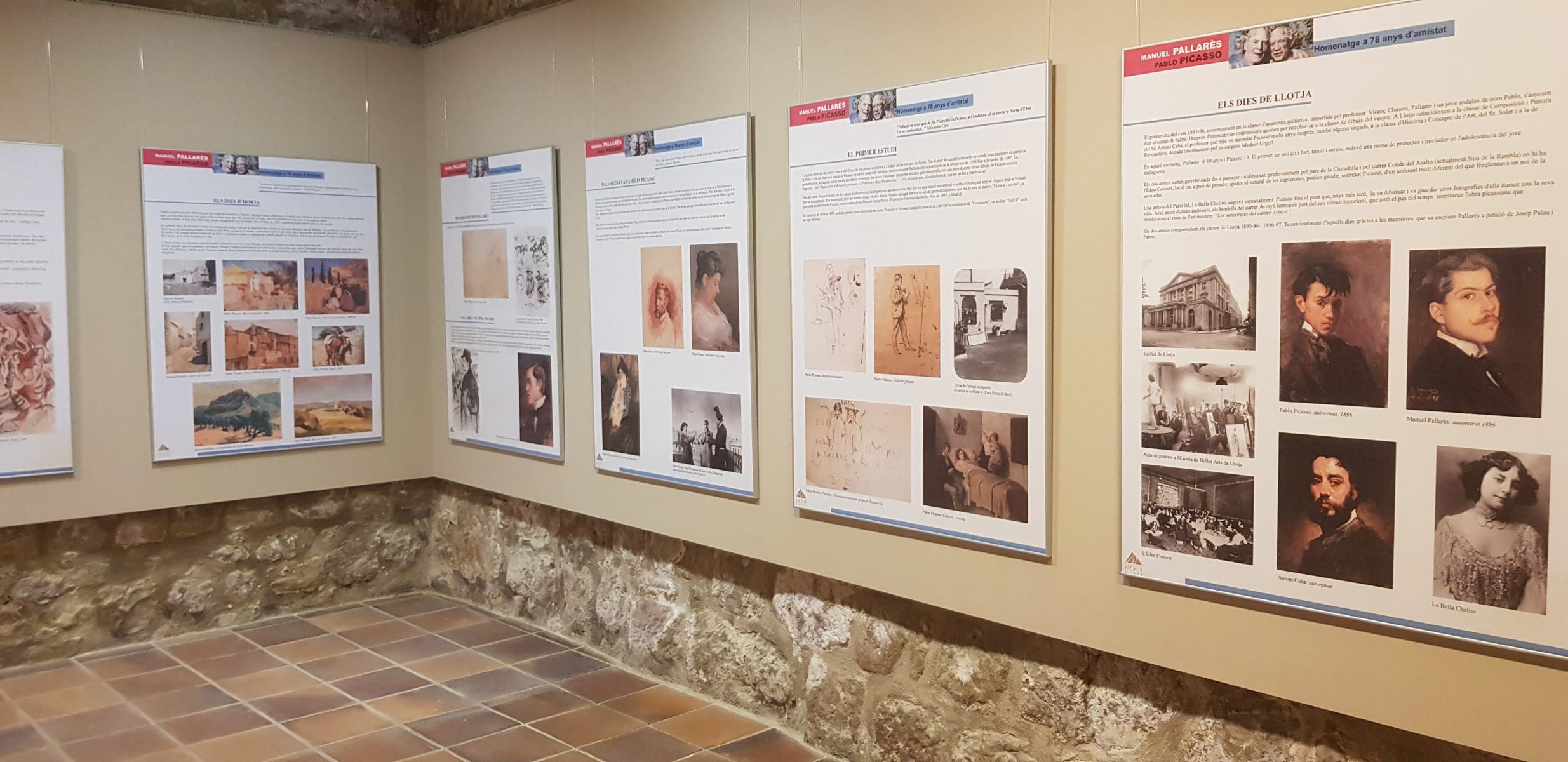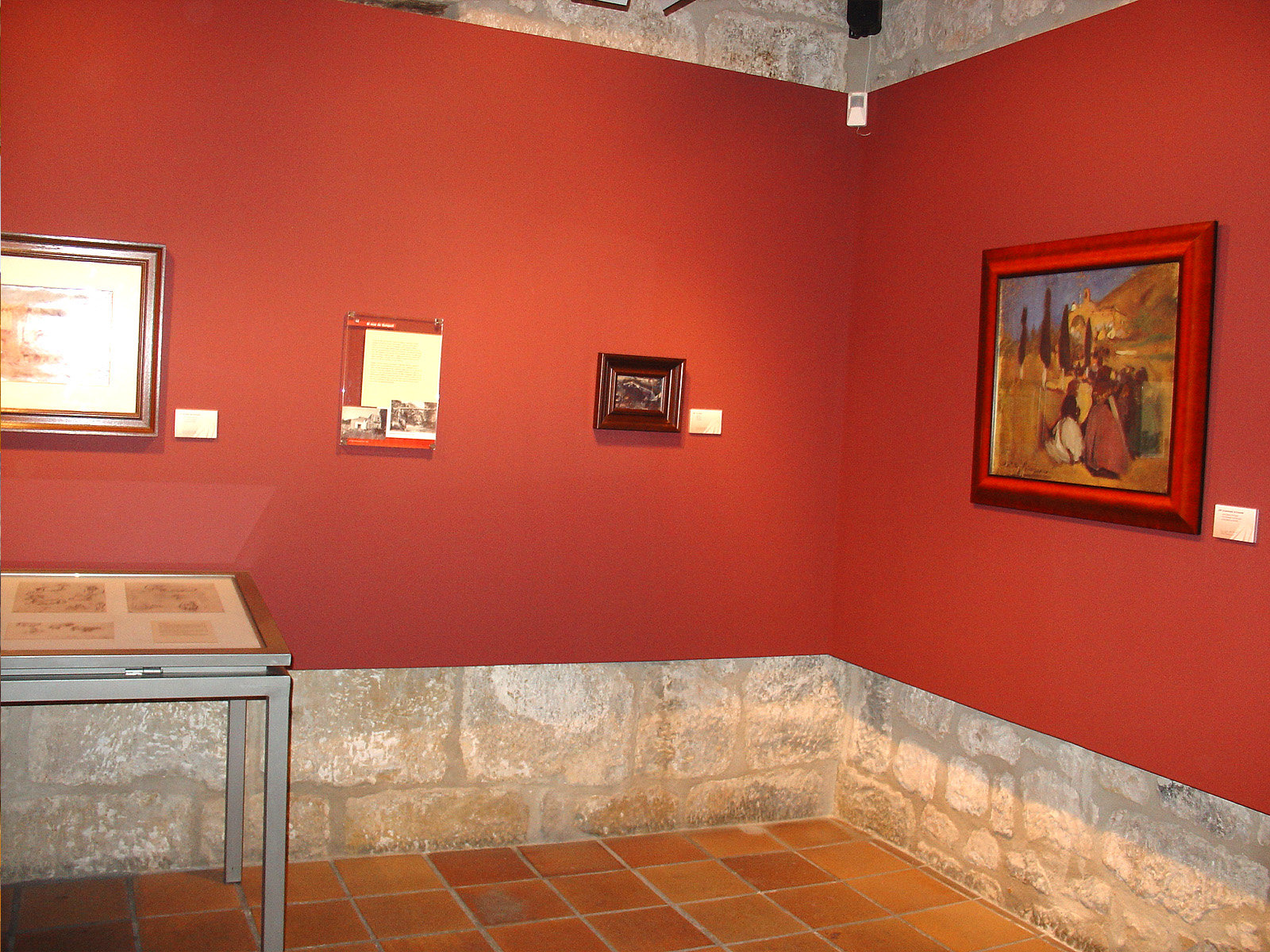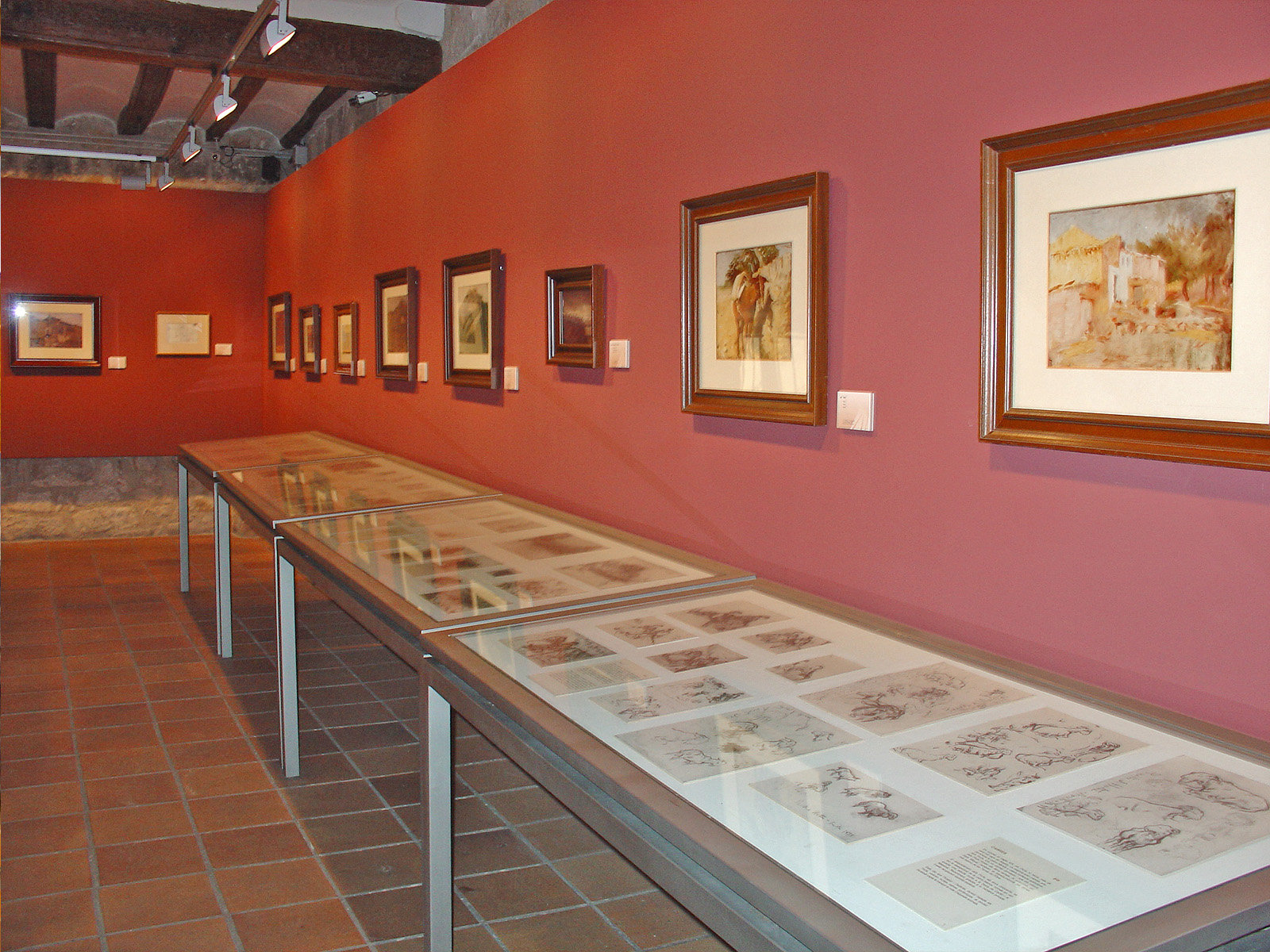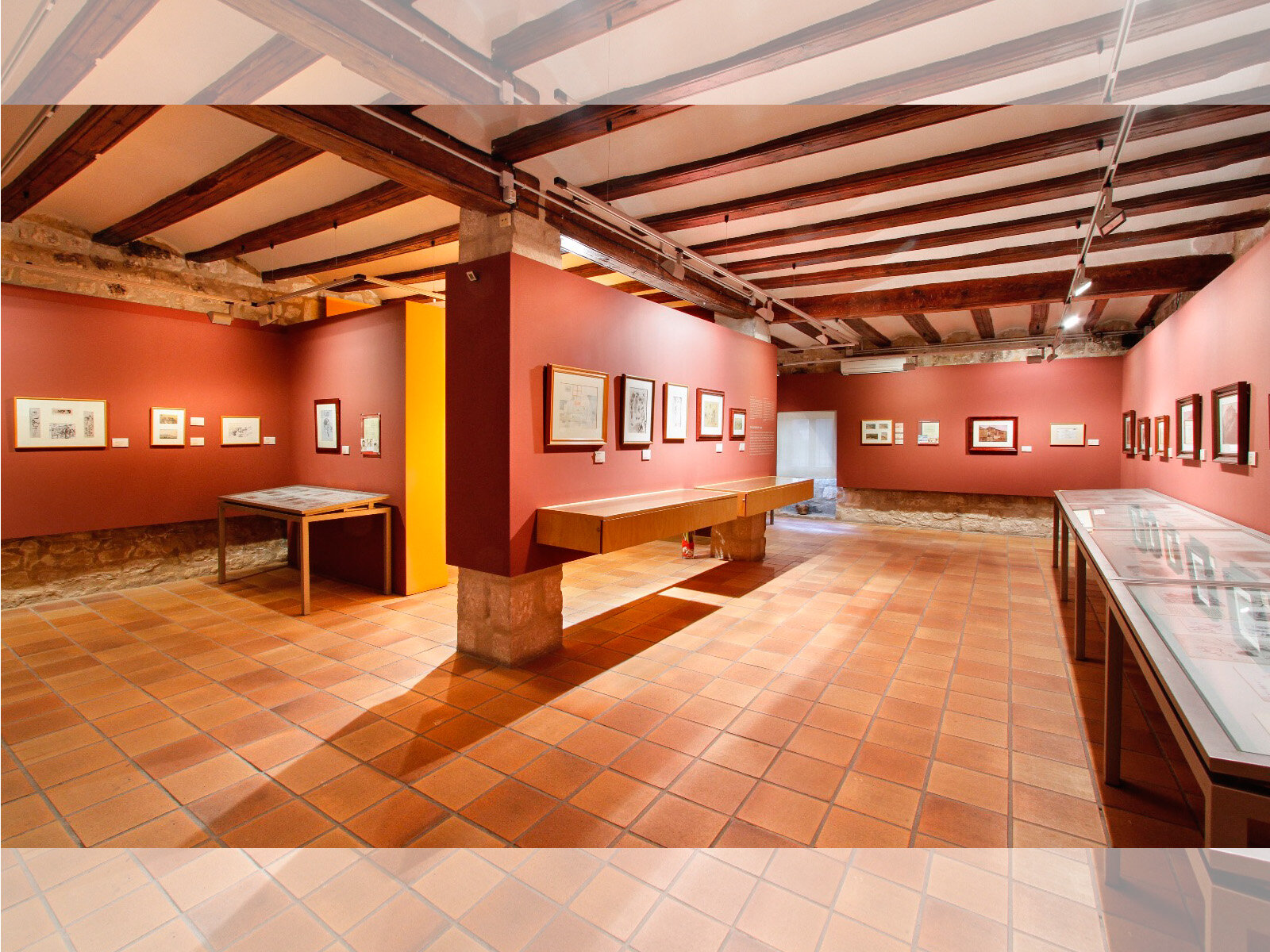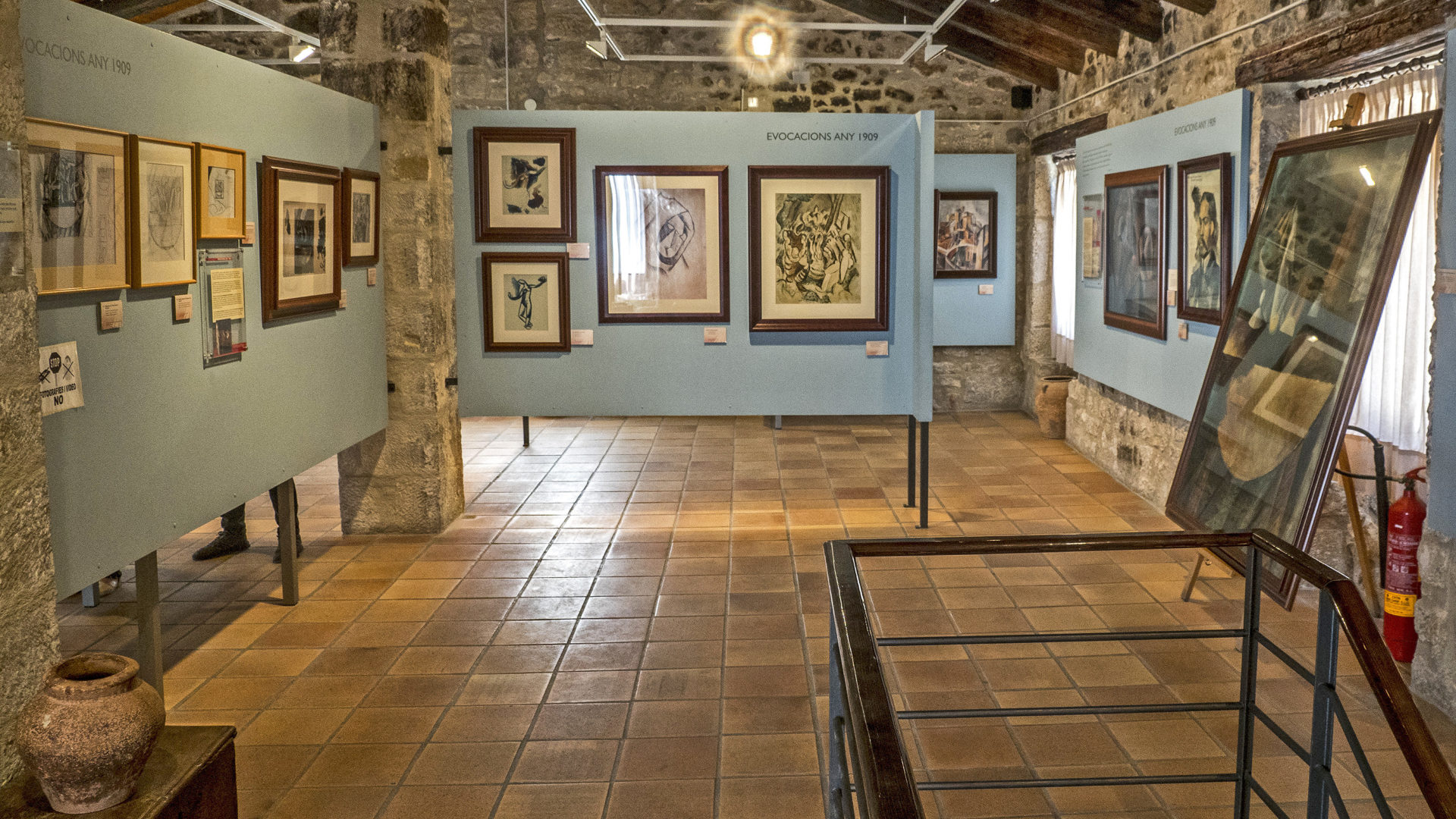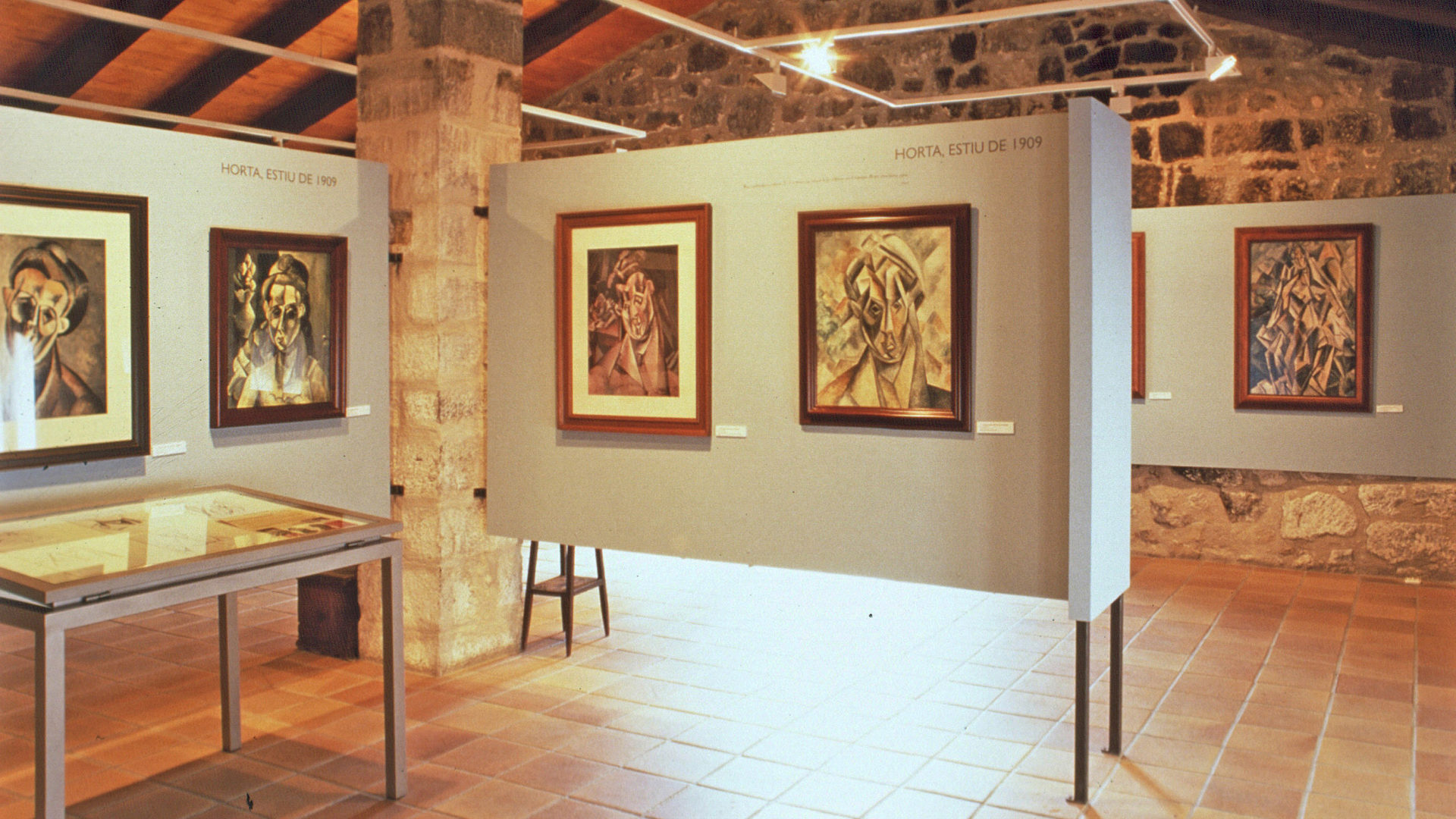What we expose
GROUND FLOOR
MANUEL PALLARÈS SECTION
This room is dedicated to the great friendship between Picasso and Manuel Pallarès. A series of exhibition panels accompanied by texts and images shows this 78-year-old companionship.
This space is also suitable for temporary exhibitions.
On this floor we can also see the Picassian Capgrossos of Horta (carnival figures with a large head) which always accompany the giants Salvador and Bárbara at local festivals.
FIRST FLOOR
FIRST STAY: June 1898 – February 1899
The facsimile reproductions are exhibited on the first floor. They are the most similar to the original works because they are taken directly from the original pictures Picasso painted during the nine months of his first stay in Horta. The drawings and sketches Picasso made while living in Horta are gathered together in glass tables according to topics (portraits of children, people working, goats, trees, etc.). Some explanations approach us to the plastic and sentimental interpretation of these artworks.
The oil paintings and coloured drawings are placed on the walls. You will find “el Mas del Quiquet”, some landscapes and the great oil painting of the Procession to the Convent.
The artist’s other works which, although produced in Barcelona in 1902 and 1903, make reference to Horta and are an evocation of the village can also be seen in the centre.
SECOND FLOOR
CUBISM Summer 1909
The facsimile reproductions of the artworks made in Horta during the second stay are exhibited on the second floor. There are also some others that, even though were made in Barcelona or Paris in 1902, 1903 and in the spring of 1909, refer to the village. They are the Evocations of Horta. Among the evocations, the series dedicated to “Saint Anthony’s Temptations” and “Carnival in the tavern” stand out.
The artworks made in Horta in 1909 provide the setting for the geometric cubism and are closely related to Horta. The edges of the Picassians landscapes of Horta and the curves of the portraits of Fernande converge giving the impression that Fernande’s head and Saint Barbara mountain are superimposed.
